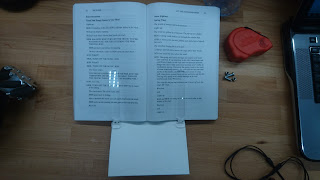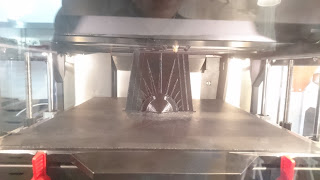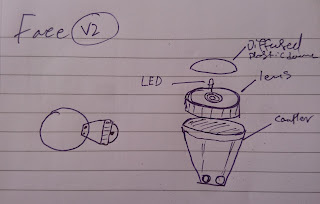As a start I painted the MDF parts of the built white to match the over all colour scheme. I then 3D printed a series of "shoulder shelves" that would serve a double purpose of acting as a removable hatchway into the animatronic but also as a plot device.
Using small neodymium magnets in both the shelves and the shoulder struts I created a magnetic connection.
Below is another shelf that acted as a book holder for the animatronic. There is also a model that holds a small tea cup.
The book holder uses 100mm x 20mm x 3mm clear acrylic strips attached with zip ties to hold the book in place with pressure on the pages. This allows the book to be attached for a performance with little to no damage to the book.
To attach the battery securely I used a laser cut acrylic mesh that had perforations along tabs. Using a heat gun I then bent each tab whilst clamped in a vice.
The remaining tabs where lined up with holes on the black platform, drilled and bolted into place.
As the battery holder was hand bent I was able to provide a snug fit for the batteries and the extra cabling.
After my previous tests I knew that the weight distribution of the head was an issue for the motors. The original design was particularly top heavy and to counter that I moved the battery pack below the axle and the head itself closer to the axle. This provides a far more consistent speed or rotation for the head.
Below is the progression of assembly for the most important joint in the animatronic. The large bearing provides stability to the connection but the small mounting hub in the centre is attached tot he motor on the bod and bolted to the upper deck of the platform. This mounting hub is secured with two grub screws and Loctite Boltlock.
Because every bolt in the assembly is fitted with a Nyloc nut these grub screws are the only fitting that needs regular tightening after each performance. The stress from the 360 degree rotation does loosen the grub screws over time.
The sides needed to be easily removable and so are twist tied on.
Decals were applied as part of the finishing touches. A warning sign to the back panel and a model number for the motor.
With everything zip tied or Velcroed in it was time to close up the animatronic.
Small screws were used at the four corners of each panel for easy access to the inner assembly.
The animatronic finished and ready for performance.
















































